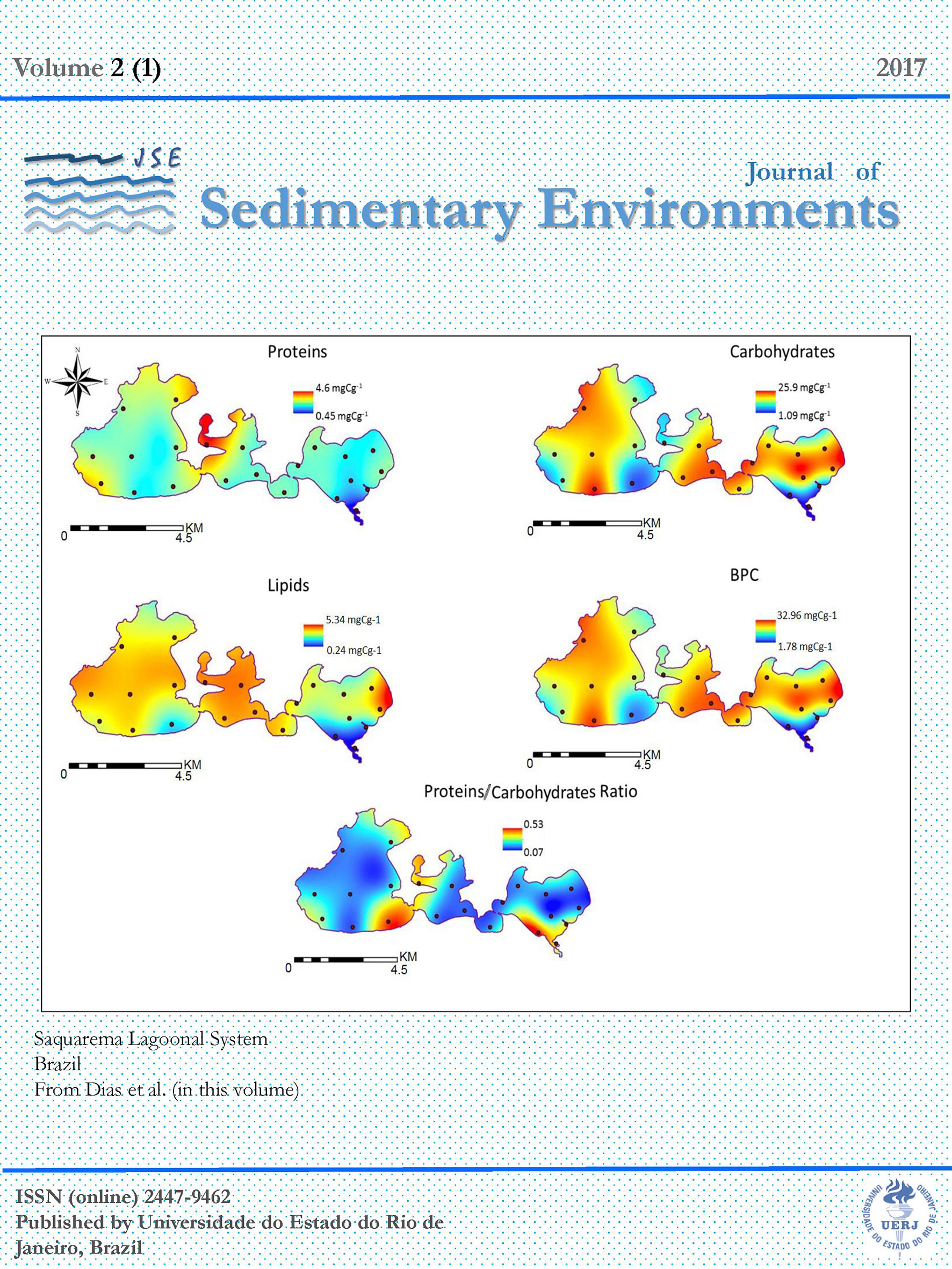HOLOCENE CLOSURE OF A BARRIER BEACH IN SEPETIBA BAY AND ITS ENVIRONMENTAL IMPACT (RIO DE JANEIRO, BRAZIL)
DOI:
https://doi.org/10.12957/jse.2017.28215Keywords:
Foraminifera. Total organic matter enrichment. Paleoenvironmental Evolution. Coastal area. Tropical Climate.Abstract
Core T4 (with 286 cm long) collected in the inner part of Sepetiba Bay is a record of late Holocene evolution of this ecosystem. This core was described and sampled every 2 cm. Samples were submitted to textural, geochemical and foraminifera analyses. Two radiocarbon dates were obtained. Estimated ages indicate that core T4 represents the last ≈4,000 years calibrated before present (yrs cal BP).
Results of this core suggest that coarse sediments, recorded in the period between ≈4,000-3,400 yrs cal BP, were probably associated with high hydrodynamic conditions in the study area. These sediments should be deposited at an incipient phase of the Marambaia Beach Barrier evolution. The development of this sand barrier protected the inner region of Sepetiba Bay from the action of strong waves and active coastal currents and favored its confinement. This area of Sepetiba Bay became a low energy system, which favored the deposition of fine-grained sediments rich in organic matter content. Organic matter enrichment increased especially in the upper core section. Foraminifera assemblages and carbonates content indicate that the studied region also should have been affected in the last ≈3,400 yrs cal BP by changes in the water depth column.
The results obtained in the core T4 show that the confinement and eutrophication process of the internal zone of Sepetiba Bay has been occurring since ≈3,400 yrs cal BP and should have been caused by factors such as geomorphological, climatic changes and human activities, which influenced the its hydrodynamics and sedimentary dynamics.
Published
Issue
Section
License

Journal of Sedimentary Environments (JSE) is licensed under a Creative Commons Attribution-Noncommercial-Share Alike 4.0 International License.

